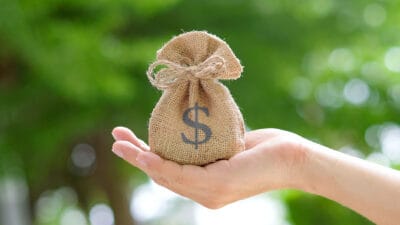For investors seeking reliable passive income, ASX dividend shares can be the perfect solution. Income-paying shares have the potential to provide healthy passive income to anyone who owns them, in addition to lucrative franking credits.
The best dividend shares tend to raise their dividends over time too, which can offset the effects of inflation and provide an income stream that can help fund retirement.
But all of this doesn't necessarily mean that everyone should rush out and pour all of their capital into ASX dividend stores right now. There are three essential steps you should do first.
3 steps to take before buying ASX shares for passive income
Get your financial house in order
Investing for passive income is pointless unless your finances are in order first. Most importantly, you need to make sure you are debt free, at least outside of having a mortgage. Credit cards, personal loans, and car loans are all popular financial services that millions of Australians regularly use.
But these tend to be disastrous for your personal finances. Usually, these kinds of loans have rather high interest rates, usually around 10%. In the case of a credit card loan, the interest rate can be as high as 30%.
If you have outstanding loans on your books, you need to prioritise paying these off before even thinking about investing in ASX shares for passive income. ASX shares do provide great long-term rates of return. But these are probably not enough to make up for a 10% interest loan chewing into your finances.
After that, you need to make sure you are consistently spending less than you earn before investing in ASX shares so that you don't need to take out these sorts of loans again.
Understanding the dos and don'ts of investing
Investing in ASX shares is a great way of building up a stream of passive income. But you will end up shooting yourself in the foot (or wallet) if you don't know how the share market works. It's easy to invest in shares for passive income when the markets are going up.
But when the inevitable stock market crash comes around, you might do enormous damage to your finances by selling out of your shares at the wrong time.
So make sure that you are comfortable in the companies you are investing in, and have faith in a prosperous future for them. If that is the case, chances are you will be more tempted to buy shares during a crash for cheap prices, rather than selling out of them in panic.
Find quality ASX shares that you can rely on for passive income
Before you buy ASX dividend shares for passive income, you need to be sure that the companies you are investing in are strong enough to pay you a rising income stream over the rest of your life.
ASX shares like BHP Group Ltd (ASX: BHP), Wesfarmers Ltd (ASX: WES), Telstra Corporation Ltd (ASX: TLS), and Coles Group Ltd (ASX: COL) are all strong, stable companies with a long market presence in Australia. They have also all arguably shown an ability to raise their dividends over time.
Of course, each share is different and operates in a different corner of the economy. Dividends from resources or energy shares are always going to be more cyclical than those offered by a consumer staples share like Coles, for example. That's why diversification is also important.
However, many investors tend to go for shares that have high starting dividend yields. This might seem tempting but usually, these shares are being priced with a high yield for a very good reason. For example, Magellan Financial Group Ltd (ASX: MFG) currently has a fully franked dividend yield of more than 13%.
That hides the fact that the company's 2023 interim dividend of 46.9 cents per share was less than half of its 2022 item dividend of $1.10 per share. If a company is bleeding customers (as Magellan is), then it won't have the ability to keep its dividend at previous levels.
The same could be said of WAM Capital Ltd (ASX: WAM), which has less than a year's worth of dividends left in its profit reserves.
So the last step investors must take before investing is finding companies that will grow their dividends over time, rather than the ones seemingly offering the highest yields today.









